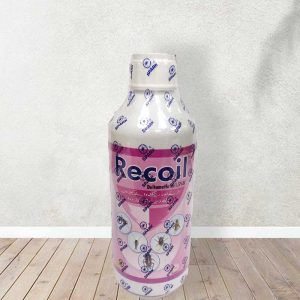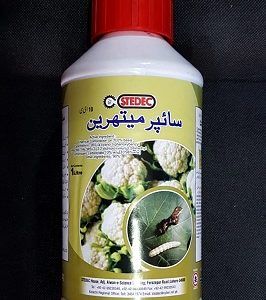If you have ever used an insecticide, chances are you have come across the term “pyrethroids.” Pyrethroids are a class of synthetic chemicals derived from natural pyrethrins, which are found in the flowers of certain chrysanthemum plants.
In this article, we will explore what pyrethroids are, how they work, their potential risks, and alternatives that can be used for pest control.

What Are Pyrethroids? Understanding Pyrethroids: How They Work
Pyrethroids are widely used insecticides due to their effectiveness against a broad range of pests and their low mammalian toxicity. They work by disrupting the nervous system of insects, causing paralysis and eventually death.
Pyrethroids are contact poisons, meaning they need to be in direct contact with the insect to be effective. They also have a relatively short residual effect, meaning they break down quickly in the environment and do not persist for long periods.
Types of Pyrethroids
There are several types of pyrethroids, each with different properties and uses. Some of the most common pyrethroids include:
Type I Pyrethroids
Type I pyrethroids, such as permethrin and cypermethrin, are widely used in household and agricultural insecticides. They are effective against a broad range of pests, including mosquitoes, ticks, fleas, and cockroaches. Type I pyrethroids have a longer residual effect than type II pyrethroids, meaning they remain active for a longer period.
Type II Pyrethroids
Type II pyrethroids, such as deltamethrin and lambda-cyhalothrin, are more toxic and have a shorter residual effect than type I pyrethroids. They are used primarily for agricultural purposes, including crop protection and pest control.
Risks and Concerns Associated with Pyrethroids
While pyrethroids are considered safe for humans and animals when used as directed, they can pose risks if used improperly.
- Ingesting or inhaling pyrethroids can cause symptoms such as dizziness, nausea, and headaches.
- Exposure to high doses can cause seizures, respiratory paralysis, and even death.
- Pyrethroids can also be toxic to bees and other pollinators, leading to declines in their populations.
- Another concern with pyrethroids is their potential to contribute to the development of insecticide resistance in pests.
- Overuse of pyrethroids can lead to the selection of resistant strains of insects, making it more difficult to control them with insecticides.
Alternatives to Pyrethroids
For those who are concerned about the risks associated with pyrethroids, there are several alternatives that can be used for pest control. Some of these include:
Neem Oil
Neem oil is a natural insecticide derived from the seeds of the neem tree. It works by disrupting the hormonal system of insects, preventing them from feeding and reproducing. Neem oil is effective against a broad range of pests, including aphids, mealybugs, and spider mites.
Diatomaceous Earth
Diatomaceous earth is a powder made from the fossilized remains of diatoms, a type of algae.
- It works by dehydrating the exoskeletons of insects, causing them to die of dehydration.
- Diatomaceous earth is effective against a wide range of pests, including ants, fleas, and bed bugs.
Integrated Pest Management
Integrated pest management (IPM) is a holistic approach to pest control that focuses on preventing pests from entering homes or crops in the first place.
IPM involves using a combination of techniques, such as physical barriers, biological controls, and cultural practices to minimize the need for insecticides.
Conclusion
Pyrethroids are a widely used class of insecticides that are effective against a broad range of pests. While they are generally considered safe for humans and animals when used as directed, they can pose risks if used improperly.
There are several alternatives to pyrethroids that can be used for pest control, including neem oil, diatomaceous earth, and integrated pest management.
By understanding the risks and benefits of pyrethroids and their alternatives, individuals can make informed decisions about pest control that promote both human health and environmental sustainability.
FAQs
-
Are pyrethroids safe for pets?
Pyrethroids can be toxic to pets if ingested or if they come into contact with a concentrated form of the chemical. It is important to follow label instructions carefully and keep pets away from treated areas until the product has dried.
-
Can pyrethroids be used in organic farming?
Some pyrethroids, such as pyrethrins, are approved for use in organic farming. However, it is important to check with the specific organic certification program to ensure compliance with their standards.
-
Can pyrethroids cause allergies?
Some individuals may be allergic to pyrethroids, which can cause symptoms such as skin irritation, respiratory distress, and anaphylaxis.
-
Can pyrethroids be used to control bed bugs?
Pyrethroids can be effective against bed bugs, but they can also contribute to the development of insecticide resistance. Alternatives such as heat treatment or diatomaceous earth may be more effective in the long term.
-
Are there any environmental concerns associated with pyrethroids?
Pyrethroids can be toxic to aquatic organisms and pollinators such as bees, which can lead to declines in their populations. It is important to use pyrethroids responsibly and consider alternative pest control methods that minimize environmental impact.

Dr. Ahmed is a renowned entomologist with over 20 years of experience in studying insects. He obtained her Bachelor’s degree in Biology from the University of Punjab, and then completed his Master’s and Ph.D. in Entomology from the University of the Punjab.
Dr. Ahmed has conducted extensive research on the behavior, ecology, and evolution of insects. His work has been published in numerous peer-reviewed scientific journals and has been presented at international conferences. He has also served as a consultant for various organizations, including government agencies and private companies.










